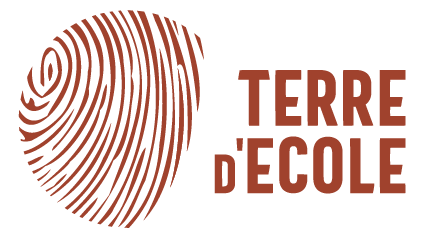The campus
Human and Bioclimatic Architecture
The architectural project of the Kintélé campus was entrusted to internationally renowned Moroccan architect Jamal Lamiri Alaoui and his teams (JLA Studio). The firm proposes “an eco-responsible, cohesive campus integrated into its regional and cultural environment with a strong visual identity.”
Spanning over 1,000 square meters of construction, the campus consists of several independent buildings housing 28 classrooms, administrative offices, a school cafeteria, a medical center, as well as several accommodation pavilions (boarding houses and staff quarters), a Sports Academy, and greenhouses. These buildings are distributed around a large open space, nicknamed the “marketplace,” the central nucleus from which the entire campus and its fields and forests are connected by a network of pathways and circulation routes – a framework of functional and flexible axes that unify the entire project.
An essential axis of the Terre d’École program, the environmental dimension of the architectural project has not been neglected. The construction meets the climatic characteristics of the environment and the terrain’s specificities. The combination of heavy and light materials, as well as the use of vegetation, reinforce thermal insulation.
To ensure a high degree of energy self-sufficiency for the complex, the roof’s inclination, adorned with photovoltaic panels, also allows for optimal capture of solar rays. This inclination also facilitates the collection of rainwater – which is also harvested by runoff on the ground. This rainwater joins an underground drainage network emptied into basins, where it is recycled to allow hydraulic independence for the establishment.
A campus integrated into its cultural, economic, and human environment
